You must be logged in to post a review.
MEHAL-LA JALIFIANA – CAID (LIEUTENANT) – 1938.
€68.00
Figure to assemble and paint
Ref.: 5 – CT
Weight: 250 grs.
Material: Metal blanco
Number of Pieces: 18
Historical Review:
In compliance with the Franco-Spanish agreements signed in the Treaty of Fez in 1912, the protectorate of Spain in Morocco was created in October 1913. As a result, it was decided to organize an indigenous unit in Tetouan with the status of a regiment for the protection of the Sultan’s representative, the Khalifa.
Khalifa is the Arabic form of the word caliph, which is the title historically adopted by those who were considered the head of Islam (as they were the successors of Muhammad). However, when the word Khalifa is used in Spanish, keeping its original Arabic pronunciation, it refers to the Jalifa of Spanish Morocco, who was the representative of the sultan, who resided in Rabat, the capital of the French protectorate. The Jalifa, for his part, resided in Tetouan. Within the protectorate system, both, each in his respective area, embodied the fiction of sovereignty of Moroccan institutions. The function of the Jalifa was above all symbolic, signing the provisions issued by the Spanish high commissioner and accompanying the Spanish authorities.
The High Commissioner General Marina gave the pertinent instructions to the then Lieutenant Colonel of Cavalry Miguel Cabanellas to implement the creation of the Mehal-la Jalifiana. This unit was to serve as the basis for the formation of a future Moroccan army. It was assigned the missions of guarding the Jalifa, rendering honors in official acts and assisting the Spanish Army in the field. All the staff are indigenous, except for a cadre of Spanish instructors. This first meha-la was divided in two tabores -battalions-, one or two of mias -companies- of three yemas-sections-, commanded by their respective caids -native officer-, equivalent to the rank of lieutenant. The NCOs were called mokaddemin, corporals, maauenin, and soldiers askaris. Each mia of infantry had 110 askaris and those of cavalry 75.
Since its creation and up to 1926, a total of six mehal-las had been constituted. His performance in the Moroccan campaigns was quite relevant, although because of the way they were recruited, betrayals and desertions were very frequent.
The Jalifa, Muley Hassan, was a puppet of the Spanish government and, like the Grand Vizier of Tetouan, decided to support the 1936 military uprising by providing volunteers to the rebel side. It was precisely a detachment of the mehaznías Franco’s first Moorish guard.
During the Spanish Civil War, each mehala sent two tabors to the peninsula, who were assigned to the different Divisions. At the end of 1938 they were distributed as follows:
– 1st and 3rd tabors of the Tetuan Mehala No.1: 53rd Division (Aragon);
– 1st tabor of the Mehala de Melilla No.2 and 1st tabor of the Mehala Rif No.5: 11th Division (Centre);
– 2nd tabor of the Mehala de Melilla No.2: 107th Division (Centre);
– 1st tabor of the Mehala de Larache No.3: 18th Division (Centre);
– 2nd tabor of the 3rd Larache Mehala: 14th Division (Centre);
– 3rd tabor of the Rif Mehala No.5: 108th (Ebro) Division;
– 1st and 2nd tabor of the 6th Gomara Mehala: 83rd Division (Ebro).
The basic uniformity of the meha-la for the troops consisted of a brown djellaba with thin white stripes, a sand-colored candora and turban or chechia -fez or smaller and rounded tarbuch-. The officers’ uniform was green-gray, with high black boots, leather belts and a plate cap, an Elizabethan cap with the colors red and emerald green, and the characteristic tarbuch or fez.
The figure wears on the left sleeve of his candora the emblem of the army corps to which his tabor belongs (in this case the Army Corps of Aragon), under it four angles corresponding to the wounds in campaign, and under these the distinctive of the Collective Military Medal. On the breast, the insignia of his command and the rhombus with the six-pointed star, the emblem of the Mahal-la. He wears the tarbuch characteristic of these units. He carries the Astra 400 pistol in its holster and the regulation binoculars.
On the Moorish saddle, the Puerto Seguro sabre can be seen in its scabbard, in the characteristic way of carrying it.
The Price is not inclusive of shipping costs
5% for orders over 95,00€
10% for orders over 185,00 €
15% for orders over 275,00 €
- The discount fees are exclusively on items, without shipping costs -

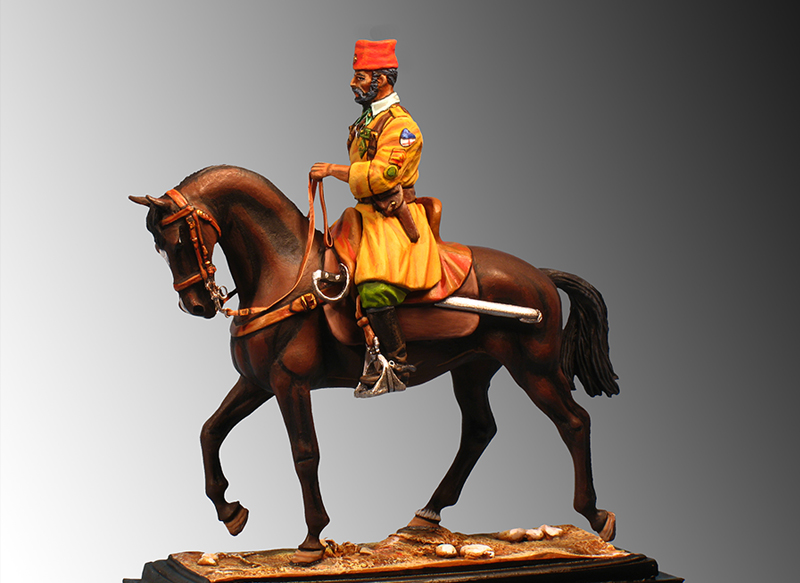
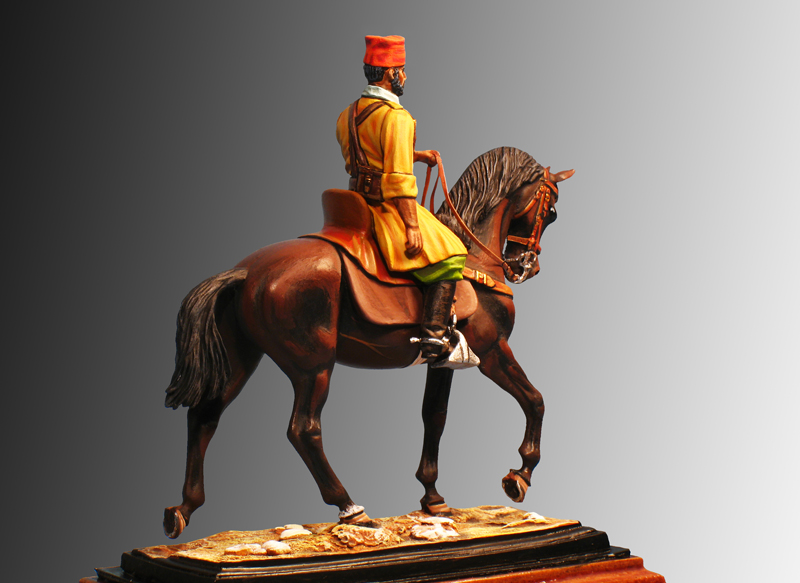


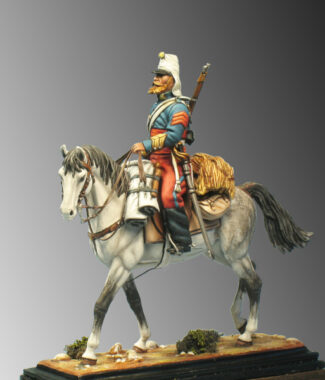
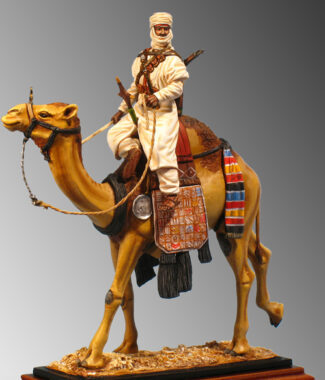
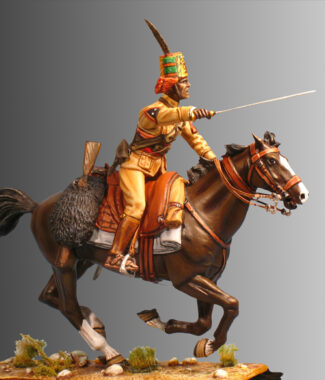
Reviews
There are no reviews yet.